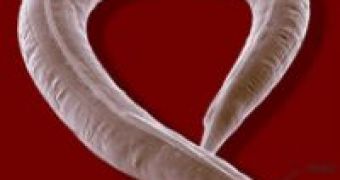One in six couples worldwide faces infertility problems and nobody has been able to find out the exact reason why.
But a team of Rutgers genetic researchers have discovered the mystery behind fertility: two genes, namely egg-1 and egg-2, necessary for this process.
The proteins encoded by these genes are similar to low density lipoprotein (LDL) receptors, known from cholesterol and fat metabolism but never before specifically implicated in fertilization.
Researchers noticed that in the absence of these two genes, the vital process of fertilization halted.
"What we learn in studying fertilization is not only important for this event, but also for the functioning of other cells in our bodies and for understanding many of those processes," Andrew Singson, author of the study, said.
Fertilization has primarily been studied in mammals or select marine invertebrates; but Singson and his group have instead turned to the lowly roundworm Caenorhabditis elegans (C. elegans), the first multicellular organism to have had its genome completely sequenced.
The worm's most important attribute as a model for this work was its curious reproductive biology. Worms exist as males or hermaphrodites. When hermaphrodites are young they produce sperm and switch to produce eggs as adults.
Because of this, Rutgers researchers were thus able to alter eggs in the hermaphrodites and use sperm from young males to test fertilization.
In order to see what happens when worms lacked the function of egg-1 or egg-2 genes, genetic tools, such as RNA interference, were used.
The results were that the worms became sterile because fertilization had failed to occur. Normal sperm could no longer enter the eggs produced by egg-1 and egg-2 mutant hermaphrodites.
For a sperm to enter an egg, the sperm has to recognize the egg and ignore other sperm or cells in the environment, Singson explained. Then there are interactions needed to get the surface membranes of both sperm and egg to fuse, a critical initial step in fertilization.

 14 DAY TRIAL //
14 DAY TRIAL //